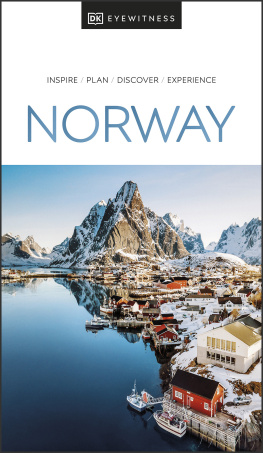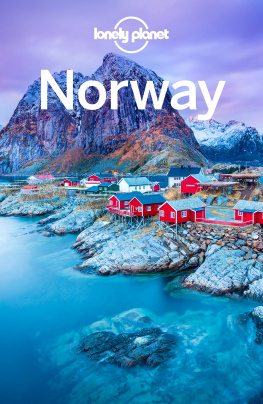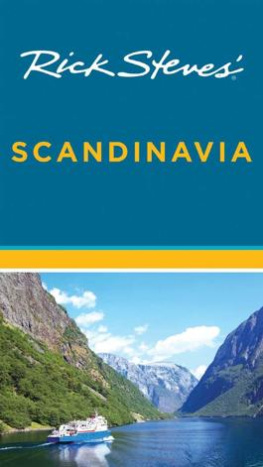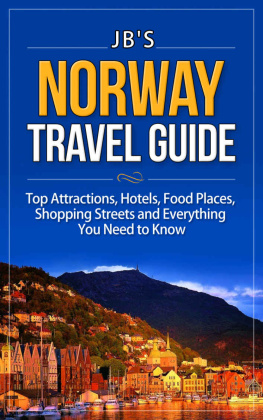Travel Adventures
Oslo, the Fjords & Southern Norway
Henrik Berezin
HUNTER PUBLISHING, INC,
www.hunterpublishing.com
michael@hunterpublishing.com
Hunter Publishing, Inc.
For more information, e-mail us at
comments@hunterpublishing.com.
All rights reserved. No part of this publication may be reproduced, stored in a retrieval system, or transmitted in any form, or by any means, electronic, mechanical, photocopying, recording, or otherwise, without the written permission of the publisher.
This guide focuses on recreational activities. As all such activities contain elements of risk, the publisher, author, affiliated individuals and companies disclaim responsibility for any injury, harm, or illness that may occur to anyone through, or by use of, the information in this book. Every effort was made to insure the accuracy of information in this book, but the publisher and author do not assume, and hereby disclaim, liability for any loss or damage caused by errors, omissions, misleading information or potential travel problems caused by this guide, even if such errors or omissions result from negligence, accident or any other cause.
Introduction
" To travel is to live." H.C. Andersen, My Life's Adventures , 1855
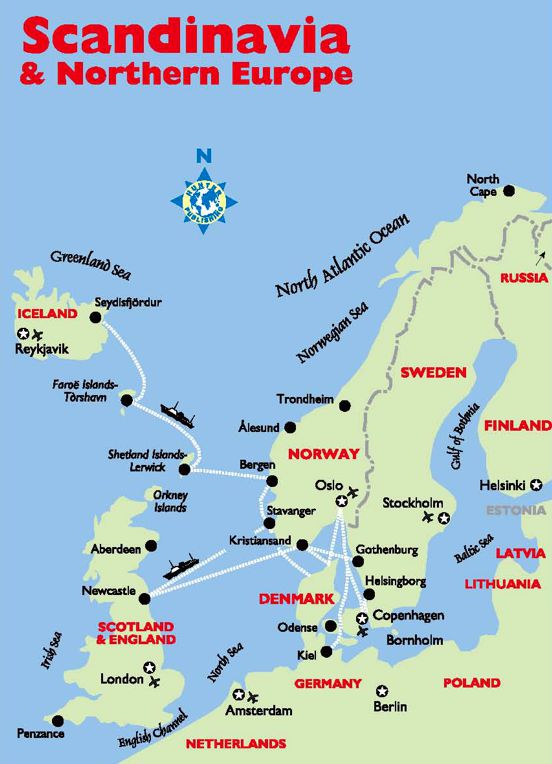
The purpose of this book, as with all of Hunter's Adventure Guides, is for the reader to truly experience the destination, not just see it. This is what makes these guides different from others. We focus more on the activities, the attractions and how to make the most of your stay through a wide variety of adventures.
An adventure, however, does not necessarily mean something that gets your adrenaline flowing; it could be anything from sightseeing to visiting a museum or going shopping. It can also mean something more physically demanding such as hiking, biking, climbing or skiing. That all depends on who you are and what you're in the mood for. At a minimum, this book should give you some good leads.
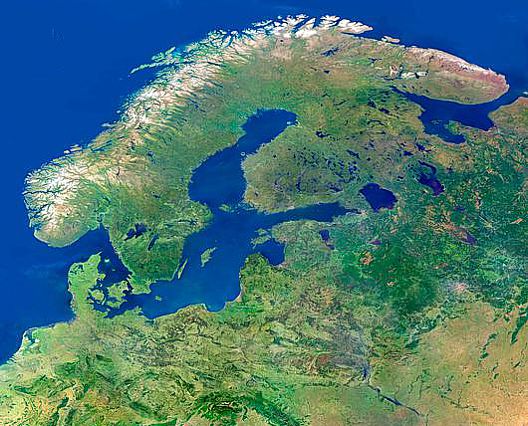
Satellite image of Scandinavia
What is Scandinavia?
The word Scandinavia probably derives from two ancient words meaning danger and island. Today, Scandinavia is neither regarded as dangerous nor an island. So how do we now define Scandinavia?
The Oxford Dictionary describes Scandinavia as: "Denmark, Norway, Sweden and Iceland."
The Encyclopedia Britannica defines it as: "comprising Norway, Sweden and Denmark," but adds that it is sometimes used more broadly to include Finland and Iceland. It also points out that Denmark technically is not part of the North European Plain and the Scandinavian Peninsula.
Webster's Online Dictionary defines it as: 1. The peninsula in northern Europe occupied by Norway and Sweden. 2. A group of culturally related countries in northern Europe; Finland and Iceland are sometimes considered Scandinavian.
Sweden and Norway are the only countries included at all times. Geographically speaking, the Scandinavian Peninsula consists of Norway, Sweden and a section of northern Finland. Considering the similarities and ties between the first two countries in history, language, culture, environment and political system, they should both be included. Denmark is technically not part of the peninsula but is nevertheless close to both Norway and Sweden, geographically as well as historically, and can therefore not be omitted.
Finland has the geographical link but their language is completely unrelated. Iceland has many links to Sweden, Norway and Denmark, mostly because of the Vikings, and Icelandic is also in the same language group (North-Germanic) as Swedish, Norwegian and Danish. On the other hand, geographically, Iceland is remote.
So Sweden, Norway and Denmark will be the focus of this guide. The History section that follows will explore the strong ties connecting the three countries, starting with the legendary Viking Age.
History
The first inhabitants of Scandinavia are believed to have been tribes settling in the southern regions, currently Denmark and southern Sweden, more than 10,000 years ago. They lived off hunting, fishing and most likely farming.
Sweden and Denmark were probably named for the prehistoric Svear and Daner people, while Norway, which simply means "the way to the north," was named for its location.
Today, the Scandinavian countries get along fairly well with each other, but it wasn't always that way. Throughout history there have been numerous wars fought and alliances formed, separating and uniting areas of this region.
The three countries have each had their respective eras of greatness, though none of the empires was able to remain powerful. The more each country expanded, the harder it was to defend.
The Viking Age (800-1050)
Before the Viking Age began around 800 AD there was a time of great migration in Europe and many found their way up to Scandinavia. The people who moved here between 400 and 800 AD developed great skills as craftsmen, traders and sailors. Gradually, they became known as Vikings.
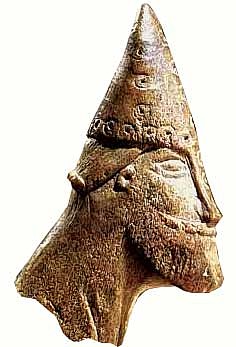
The Vikings generally lived near the sea around bays and fjords on the coastline and the word Viking probably means "from the bay" as "vik" was the word for bay in the Scandinavian languages of the time.
The Vikings are much better known worldwide than, for example, the Scandinavians of the Middle Ages even though that era lasted longer, was more recent and is probably of greater significance in Scandinavian history. The fascination with the Vikings probably derives from the myths and stories surrounding them, as well as their dramatic and violent history.
- Myth: In contemporary art as well as in movies, the Viking helmet is often shown with horns. The real Viking helmets, however, did not have them.
When the Viking Age began, there were no kingdoms in Scandinavia. Although borders separated the countries, there wasn't much difference between the languages spoken and there was not a distinct political separation between them.
The real leaders were chiefs who ruled over the areas they conquered. These areas would often shift in size and chiefs would be replaced quite frequently during these violent times as battles and fighting was part of everyday life. Most fights were man-to-man and usually didn't end until one of them died. The Vikings were also proud people and they lived by the "eye for an eye rule," meaning relatives of someone who died in a fight would often crave revenge and kill the victim's superior.
There was a more tranquil side to Vikings as well. They were known to have a great sense of humor and storytelling was an important part of their lives. A great storyteller was highly respected by his peers.
Most Vikings were illiterate and the ones who could write didn't have much to write on. Probably the most common media for writing in those days were leather and wooden sticks. Unfortunately these materials were not resilient enough to last through centuries. The evidence that has lasted is on rune stones, which can still be found in several places in Scandinavia.
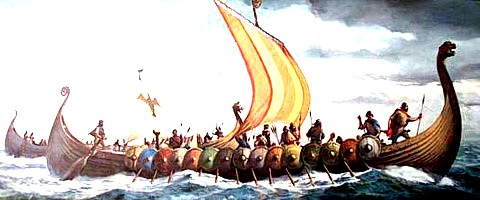
Next page


